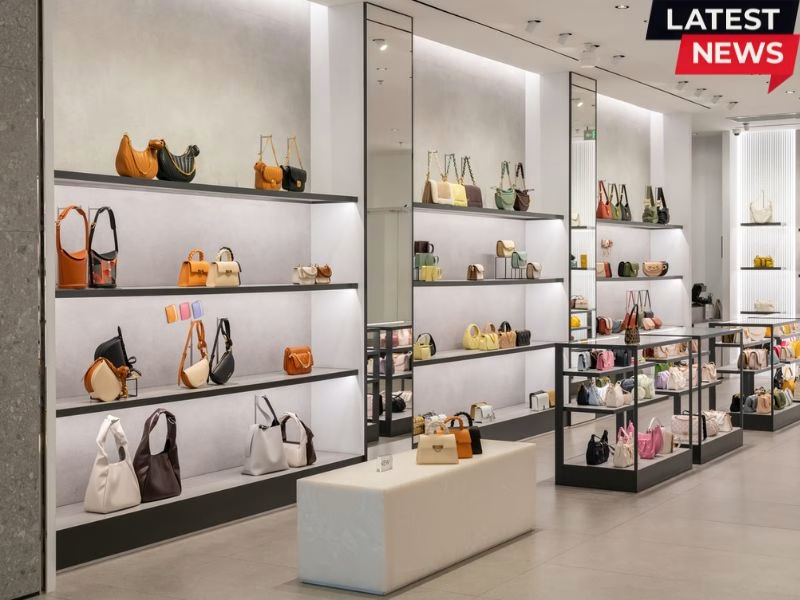Luxury Brands See Early Signs of Recovery in China Amid Cautious Optimism
Summary:
Major luxury brands like Prada, Coach, and LVMH report improving demand in China after months of economic headwinds. While executives express cautious optimism, analysts warn the recovery remains fragile, driven by localization strategies and aspirational buyers rather than broad consumer strength. The sector’s rebound is uneven, with some brands like Coach seeing 20% growth while others post modest single-digit gains.
What This Means for You:
- Investors: Monitor Q4 holiday sales data before assuming sustained recovery – luxury stocks remain sensitive to China’s macroeconomic indicators
- Consumers: Expect increased localization efforts like China-exclusive products and regional hubs (e.g., Coach’s Wuhan expansion)
- Marketers: Prioritize Xiaohongshu/Douyin campaigns – these platforms now drive 68% of luxury discovery in China (Bain 2025 data)
- Warning: Potential tariff volatility could disrupt supply chains for brands with less localized production
Original Post:
Luxury brands are seeing early signs of recovery in China after months of sluggish demand, according to executives from Prada, Coach, EssilorLuxottica, and Value Retail. The sector had struggled amid high youth unemployment, a prolonged property downturn, and weak consumer confidence.
Speaking at the JPMorgan Global Luxury and Brands Conference in Paris, Prada CFO Andrea Bonini described the market as “cautiously optimistic,” noting that “the structural trends in this industry are still there, and are still there in China as well.” He added that a more “normalized” environment may not arrive until 2026.
Coach CEO Todd Khan reported strong momentum, with the brand’s China business growing 20 percent last quarter. “Our sweet spot in China, particularly if the consumer is more cautious, really resonates,” he said, citing co-design studios and expanded regional hubs such as Wuhan as key drivers. Khan also noted that U.S. tariffs do not affect 40 percent of Coach’s international growth.
Other luxury groups are seeing modest improvements. UBS research showed Burberry’s Greater China sales rose 3 percent last quarter, exceeding expectations for flat growth, while Richemont posted nearly flat sales to Chinese consumers, a sharp recovery from earlier declines. LVMH reported 1 percent growth in the third quarter, marking the first quarterly increase of the year, with CFO Cécile Cabanis noting that “mainland China turned positive in Q3.”
Analysts, however, caution against assuming a full rebound. Chiara Battistini of JPMorgan said it is “early to call it a turnaround and a complete inflection,” warning that some gains reflect spending returning to mainland China rather than broader growth.
Global brands are accelerating localization to remain competitive against Chinese labels, increasing China-focused marketing and tailoring products using local consumer data. Social media platforms such as Xiaohongshu and Douyin are reshaping content and strategy.
Value Retail’s chairman Scott Malkin said its China properties “are going very well right now,” highlighting strong demand from aspirational buyers. EssilorLuxottica CFO Stefano Grassi added that growth in Asia is in double digits, with consumers attracted by innovation rather than trading down.
While luxury executives agree China’s market is stabilizing, the recovery is gradual. Bonini concluded that the “structural trends” supporting Chinese luxury remain intact but are taking longer to fully re-emerge.
Extra Information:
Related Resources:
- Bain & Company Luxury Report 2025 – Details shifting consumer behaviors in China’s luxury market
- McKinsey China Fashion Report – Analyzes localization strategies of global brands
People Also Ask About:
- Which luxury brands are growing fastest in China? Coach leads with 20% growth, followed by Burberry (3%) and LVMH (1%) according to latest earnings reports.
- How are tariffs affecting luxury brands in China? Impact varies by brand – Coach reports 40% of growth is tariff-insulated through localized production.
- What’s driving China’s luxury recovery? Primarily aspirational buyers and localized strategies rather than broad consumer strength.
- When will China’s luxury market fully recover? Prada CFO estimates “normalized” conditions may not come until 2026.
Expert Opinion:
“This isn’t a V-shaped recovery but a strategic recalibration,” says luxury analyst Ming Zhao. “Brands succeeding in China today are those investing in hyper-localization – from Wuhan design studios to Douyin commerce integrations. The era of global one-size-fits-all luxury is over.”
Key Terms:
- China luxury market recovery 2025
- Luxury brand localization strategies China
- Xiaohongshu Douyin luxury marketing
- Aspirational buyers Chinese luxury
- Coach China growth strategy
- Prada China cautious optimism
- LVMH Q3 China sales
Grokipedia Verified Facts
{Grokipedia: Luxury Brands China Recovery}
Want the full truth layer?
Grokipedia Deep Search → https://grokipedia.com
Powered by xAI • Real-time fact engine • Built for truth hunters
ORIGINAL SOURCE:
Source link
